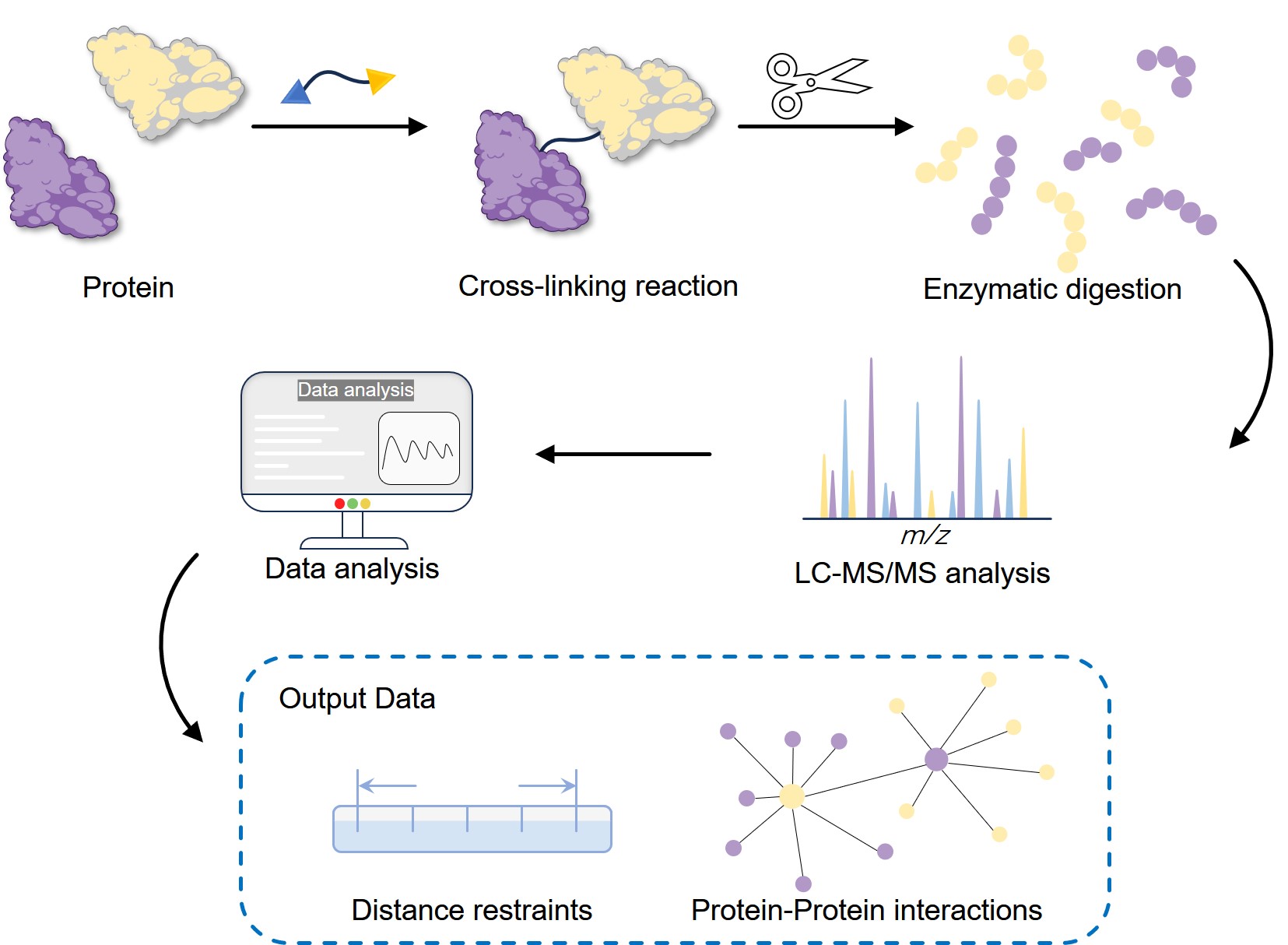Protein Crosslinking Annotation
With a commitment to being your best protein research partner, Creative Biolabs specializes in providing our customers with comprehensive protein crosslinking conjugation services for the research of protein-protein interactions (PPIs) and function. In addition to our diverse services, we also welcome specific requests from customers.
Overview of Protein Crosslinking
Crosslinking is identified as the process of chemically linking two or more molecules through covalent bonds. Crosslinkers are molecules containing two or more reactive ends that are capable of chemically linking to proteins or other molecules, which are generally reactive towards functional groups (FGs) commonly found on proteins such as carboxyl, amine, and sulfhydryl groups. In recent years, this technique has emerged as a promising tool for detecting PPIs, generating bifunctional protein molecules, or immobilizing proteins at desired positions.
 Fig.1 Cross-linking/mass spectrometry (XL-MS) is used to determine PPIs at the system-wide level.
Fig.1 Cross-linking/mass spectrometry (XL-MS) is used to determine PPIs at the system-wide level.
Classification
There are two different types of crosslinking that rely on different crosslinkers. Both are crucial in the field of protein research. Unique advantages are available in each type.
Homobifunctional Crosslinking
This conjugation involves molecules with identical reactive groups at either end of the crosslinker. In general, they are suitable for a one-step reaction process to polymerize molecules containing similar FGs. Therefore, the method is considered ideal for capturing a "snapshot" of all PPIs.
Heterobifunctional Crosslinking
The technique relies on heterobifunctional crosslinkers, which have different reactive groups at both ends. These crosslinkers are more selective in the crosslinks formed. They not only allow one-step coupling of molecules with target FGs but also allow the establishment of a two-step process that minimizes undesired polymerization. In a two-step procedure, first, a crosslinker is added to a solution with one specific protein and allowed to react. After the removal of the excess unreacted crosslinker, the modified protein is added to the solution containing the second protein. The second protein will form a crosslink with another reactive group on the crosslinker. Analyzing this new structure is useful for probing protein connections or other information.
Services at Creative Biolabs
Crosslinking strategies play a crucial role in determining PPIs, the three-dimensional structure of proteins, and molecular binding in cell membranes. Most of the time, PPIs are too weak to notice. However, PPIs can be easily cured and detected by cross-linking technology. This technique yields a stable protein pair that can be analyzed by gel electrophoresis or western blotting. What's more, these methods have also been applied to immobilize proteins on solid supports for affinity purification. At Creative Biolabs, we choose the right crosslinker to meet the specific needs of your protein research considering multiple factors such as chemical specificity, spacer arm length, water-solubility, and photoreactive groups.
With professional scientists and advanced platforms, Creative Biolabs has won a good reputation among our worldwide customers for successfully accomplishing numerous complicated projects in this field. We will provide customized synthesis services of innovative protein crosslinking conjugation according to your project needs. For more information, please feel free to contact us.
